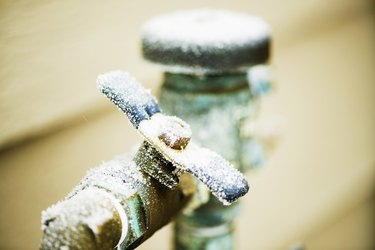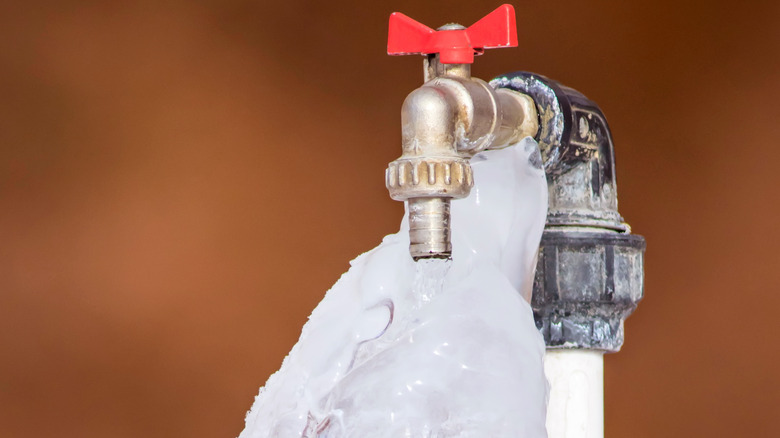Were you in search of ideas involving How To Avoid Freezing Pipes?

Cold weather can damage your plumbing, particularly by freezing pipelines. Right here's how to prevent it from happening and what to do if it does.
Intro
As temperatures decrease, the danger of frozen pipelines increases, potentially bring about expensive repair work and water damages. Recognizing just how to prevent icy pipelines is important for homeowners in cool environments.
Understanding Frozen Pipes
What triggers pipes to freeze?
Pipes freeze when subjected to temperatures listed below 32 ° F (0 ° C) for expanded durations. As water inside the pipes ices up, it increases, taxing the pipeline wall surfaces and potentially triggering them to burst.
Dangers and damages
Frozen pipelines can result in water supply disruptions, residential or commercial property damages, and costly repair work. Ruptured pipelines can flood homes and cause comprehensive architectural damage.
Signs of Frozen Pipeline
Determining frozen pipelines early can stop them from breaking.
How to recognize icy pipelines
Seek reduced water flow from taps, unusual smells or noises from pipelines, and visible frost on subjected pipes.
Avoidance Tips
Shielding prone pipelines
Wrap pipelines in insulation sleeves or use heat tape to safeguard them from freezing temperatures. Concentrate on pipelines in unheated or external locations of the home.
Home heating techniques
Keep interior areas sufficiently heated, especially areas with pipes. Open up cupboard doors to permit warm air to distribute around pipes under sinks.
Securing Exterior Plumbing
Yard hose pipes and outside taps
Detach and drain pipes yard hoses prior to winter. Install frost-proof faucets or cover outside faucets with insulated caps.
What to Do If Your Pipelines Freeze
Immediate actions to take
If you believe icy pipelines, keep faucets open up to alleviate stress as the ice melts. Utilize a hairdryer or towels soaked in hot water to thaw pipes gradually.
Long-Term Solutions
Structural changes
Take into consideration rerouting pipes far from outside wall surfaces or unheated locations. Add additional insulation to attics, cellars, and crawl spaces.
Upgrading insulation
Buy high-grade insulation for pipelines, attics, and walls. Correct insulation helps keep constant temperature levels and lowers the risk of icy pipelines.
Verdict
Preventing icy pipelines needs proactive actions and fast responses. By comprehending the reasons, indications, and preventive measures, home owners can secure their plumbing throughout winter.
5 Ways to Prevent Frozen Pipes
Drain Outdoor Faucets and Disconnect Hoses
First, close the shut-off valve that controls the flow of water in the pipe to your outdoor faucet. Then, head outside to disconnect and drain your hose and open the outdoor faucet to allow the water to completely drain out of the line. Turn off the faucet when done. Finally, head back to the shut-off valve and drain the remaining water inside the pipe into a bucket or container. Additionally, if you have a home irrigation system, you should consider hiring an expert to clear the system of water each year.
Insulate Pipes
One of the best and most cost-effective methods for preventing frozen water pipes is to wrap your pipes with insulation. This is especially important for areas in your home that aren’t exposed to heat, such as an attic. We suggest using foam sleeves, which can typically be found at your local hardware store.
Keep Heat Running at 65
Your pipes are located inside your walls, and the temperature there is much colder than the rest of the house. To prevent your pipes from freezing, The Insurance Information Institute suggests that you keep your home heated to at least 65 degrees, even when traveling. You may want to invest in smart devices that can keep an eye on the temperature in your home while you’re away.
Leave Water Dripping
Moving water — even a small trickle — can prevent ice from forming inside your pipes. When freezing temps are imminent, start a drip of water from all faucets that serve exposed pipes. Leaving a few faucets running will also help relieve pressure inside the pipes and help prevent a rupture if the water inside freezes.
Open Cupboard Doors
Warm your kitchen and bathroom pipes by opening cupboards and vanities. You should also leave your interior doors ajar to help warm air circulate evenly throughout your home.

As an enthusiastic person who reads on How to prepare your home plumbing for winter weather, I assumed sharing that excerpt was important. Feel free to take the opportunity to share this blog if you enjoyed reading it. Thanks for taking the time to read it.
Click Here